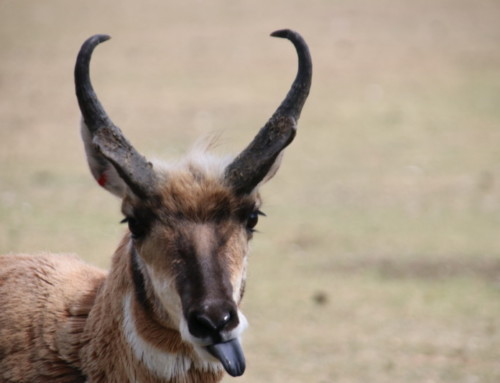The Snowshoe Hare
Lepus americanus
The Snowshoe Hare prefers forested regions, but as evidenced by the number of Snowshoe Hares seen locally, they will inhabit aspen bluffs on the prairies. The habitat size of the Snowshoe Hare is not very large, typically about the size of city block. The reason for this may be that the hare likes to have an intimate sense of its surroundings. In the event of needing a quick escape, it has been observed that hares meticulously know every bog, log, shrub and hiding place in their range and can find a place to hide from predators very quickly. Unlike the rabbits, the hares typically do not have a well-developed burrow system. This may be due to the rapid development of their young and their ability to change colour with the seasons.
The young of a Snowshoe Hare, called leverets, are born precocial. This means that they are relatively mature and mobile from birth. Leverets have been known to be hopping around feeding off of nearby bushes and grasses within a few days of being born. They are born fully furred and their eyes are open allowing them to be alert and aware of their surroundings. Rabbits on the other hand are born altricial, relying on their mothers for protection and for temperature regulation. The rabbit, in contrast, is born with its eyes closed without a fur coat. It will take several weeks before its becomes fully furred and begins to forage and venture out on its own.
The change in pelage (or fur) coat colour is reserved for the hares. The hares have two distinct sets of pelage. Starting in late September, the winter white coat will start to replace the brown fur that is shedding out. The white fur is more insulating and clearly gives them an advantage of camouflaging against the snow-covered ground. Lack of snow can be very dangerous. The poor Snowshoe Hare has no control over when their fur changes colour-that is all governed by the shortening of the days. Other factors such as heredity and other physiological factors may also play a role, but the decrease in light typically triggers the winter pelage and the increase of daylight triggers the growth of the brown, summer pelage. So, when you are out and about right now, it is clear to see all the Snowshoe Hares frolicking around looking for food as they have changed to their beautiful white coat, but our weather hasn’t quite caught up! Now that I have said that, snow is bound to fall! The only exception to the change in fur colour are the hares that reside in the southwest corner of British Columbia. Due to the low amounts of snowfall there, the hare does not need to change its pelage for its survival.
The Snowshoe Hare is fast, being able to bound up to 42 km/h, and in a zig-zag pattern which makes it tough for predators to follow. Typically we view rabbits as more social, whereas the hares tend to be much more solitary. While Snowshoe Hares will tolerate others of their own species, they are still fairly solitary, flighty animals. Hence the reason us humans have chosen to domesticate rabbits and not the hares.
Snowshoe Hares, along with their relatives the pikas and rabbits, have a short lifespan as they are a food source for a large number of carnivore species. The hare is also trapped or hunted as a source of food for humans. On average, a hare may live up to 3 to 5 years in the wild. The Snowshoe Hare’s name is very fitting as they have very large, furry feet. Their huge feet allow them to walk on top of the snow as if they were wearing snowshoes. Snowshoe Hares have adapted to life in urban areas and are regularly seen in Saskatoon neighbourhoods. Keep your eyes open this winter for their distinctive track pattern. If you are lucky you can catch a glimpse of your neighbourhood Snowshoe Hare.

